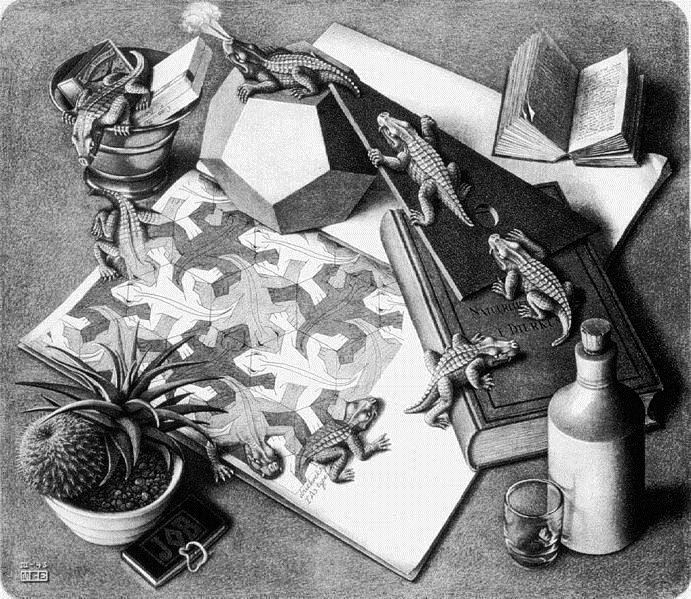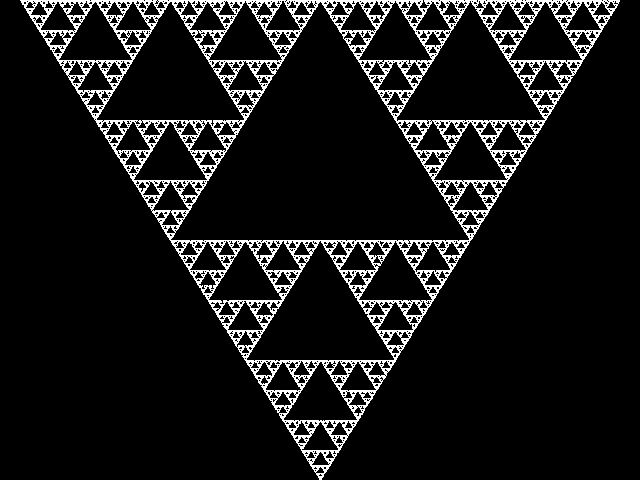 |
| Cimitero comunale di Magliano in Toscana, Magliano in Toscana, Italia |
lunedì 17 marzo 2014
venerdì 14 marzo 2014
Guarigione (Re di Coppe)
È un tempo in cui le ferite del passato, profondamente occultate, tornano a riaffiorare, pronte e disponibili a essere guarite. La figura di questa carta è nuda, vulnerabile, aperta al tocco amorevole dell'esistenza. L'aura intorno al suo corpo è colma di luce, e le qualità di rilassamento, attenzione e amore che la circondano dissolvono la sua lotta e la sua sofferenza. Fiori di loto luminosi appaiono sul suo corpo fisico, e intorno ai corpi energetici sottili che i guaritori dicono circondare ognuno di noi. In ognuno di questi strati sottili prende forma un cristallo o uno schema di guarigione. Quando ci troviamo sotto l'influenza guaritrice del Re d'Acqua, non ci nascondiamo più agli altri. In questa attitudine d'apertura e d'accettazione possiamo essere guariti, e al tempo stesso aiutare anche gli altri ad essere sani.
Ti porti dietro la tua ferita. Se è presente l'ego, tutto il tuo essere è una ferita. E tu te la porti dietro. Nessuno è interessato a ferirti, nessuno vuole intenzionalmente ferirti. Tutti sono impegnati a salvaguardare la propria ferita, chi ha energia ulteriore? Eppure accade, poiché tu sei così pronto a essere ferito, così ben disposto, sei semplicemente in attesa, ti aspetti qualsiasi cosa. Non puoi toccare un uomo del Tao. Come mai? Poiché non c'è nessuno da toccare, non c'è alcuna ferita; egli è sano, guarito, integro. Il termine “whole” (“integro”) è bellissimo. La parola “heal” (“guarire”) deriva da “whole”, come pure “holy” (“santo”): quell'uomo è integro, guarito, santo. Stai attento alla tua ferita. Non aiutarla a crescere, lasciala guarire; e guarirà solo allorché ti avvicinerai alle radici. Meno testa e maggior guarigione: senza mente non c'è alcuna ferita. Vivi una vita spensierata. Agisci come un essere globale e accetta ogni cosa. Provaci soltanto per ventiquattr'ore: totale accettazione di qualsiasi cosa accada. Qualcuno t'insulta, non reagire, accettalo e guarda cosa accade. All'improvviso sentirai fluire in te un'energia che non hai mai percepito in passato.
Etichette:
Tao Sincronico
Tao somma dei due precedenti: Tao aureo
 |
| Statua di Leonardo Fibonacci nel Camposanto di Pisa. |
 |
| Successione di Fibonacci e approssimazione alla sezione aurea |
 |
| Un foglio del manoscritto su pergamena del Liber abbaci conservato nella Biblioteca Nazionale Centrale di Firenze (Codice magliabechiano Conv. Soppr. C 1, 2616, fol. 124r), contenente nel riquadro a destra le prime tredici cifre, in numeri arabi, della cosiddetta "successione di Fibonacci". |
 |
| Il volo dei numeri di Mario Merz, un'installazione luminosa sulla Mole Antonelliana, rappresenta la successione di Fibonacci |
 |
| Girasole - Sunflower |
 |
| Aeonium tabuliforme |
 |
| Conchiglia di nautilo |
 |
| Immagine al microscopio di un'ovaia di Anglerfish (Rana pescatrice) |
 |
| Cancer cell division. This composite confocal micrograph uses time-lapse microscopy to show a cancer cell (HeLa) undergoing cell division (mitosis). The DNA is shown in red, and the cell membrane is shown in cyan. The round cell in the centre has a diameter of 20 microns. Credit Kuan-Chung Su, LRI |
 |
| Jean-Claude Perez discovered a DNA supracode controlling the self-organization of the nucleobases Thymine, Cytosine, Adenine and Guanine (T,C,A,G), which make up the steps in the double helix ladder of DNA. He discovered if you consider 144 contiguous nucleobases it results from 55 T bases and 89 C A G bases, all Fibonacci numbers. These resonances extend to the ratios of the Atomic Weights of the Bio-Atoms of Carbon, Oxygen, Nitrogen and Hydrogen that create the nucleobases of T C A G, such that the ratios of atomic weights in strands considered to be ‘junk DNA’, that is DNA which could not be translated into genetic information or related to known protein synthesis, were equal to Phi, the Golden Ration of 1.618. |
Etichette:
Interludio Tao
giovedì 13 marzo 2014
gradienti meta-Tao
La successiva metastruttura discussa da Tyler Volk e Jeff Bloom sono i gradienti, intesi come variazioni continue di variabili - scalari o vettoriali - contrapposte a distinte variabili binarie "vere" o "false":
Background
Gradients refer to continuums and shades of gray rather than rigid binaries of black and white. Both hierarchies and holarchies can be described as clearly defined and fuzzy demarcations along a continuum. Size, color, light, temperature, speed, quantity, amounts, elevations, distances, etc. refer to continuums. Most choices for humans and other animals do not manifest as a clear binary, but as a multiplicity along a continuum with no clear “right” or “wrong.”
 |
| Gradient of the 2-d function f(x,y) = xe-x2-y2 is plotted as blue arrows over the pseudocolor plot of the function. |
Examples
- In science: speed; acceleration; temperature gradients; slopes; density; solubility; salinity; statistical degrees of freedom; levels of hurricanes, tornado, earthquakes; etc.
- In architecture and design: walkway design; handicap ramps; elevators; lighting of spaces; plumbing design; landscape drainage; golf course design; etc.
- In the arts: use of color, light, and shading; pace of action in dance and drama; curvatures in sculpture; tempo in music; etc.
- In social sciences: population densities, public opinion, intelligence (whatever it is), economic trends, from traditional to modern allegiances in tribal and cultural groups, intensity of emotions, etc.
- In other senses: “mixed emotions,” degrees of friendship, “closeness” of families, types of lies, etc.
Metapatterns
The Pattern Underground
Etichette:
Struttura che Connette
mercoledì 12 marzo 2014
martedì 11 marzo 2014
Tao Paradoxico-Philosophicus 14-16
Un dieu donne le feu
Pour faire l'enfer;
Un diable, le miel
Pour faire le ciel.
TRACTATUS PARADOXICO-PHILOSOPHICUS
| 14 | Groups: consider observers interacting through their cognitive domains with other observers forming networks of observers and thereby creating organizations of different sizes and forms, such as open organizations, closed organizations or even organizationally closed unities, all made of observers. |
| 14.01 | These groups, originally undistinguished by their members, remain as such for most of their members. |
| 14.1 | Integration: members must follow the rules to define and maintain the group. |
| 14.11 | Disintegration: groups, whose members do not follow the rules, fall apart. |
| 14.2 | Logical observers adopt or reject the rules of the group through language, explanation and communication thus participating in trivial language-games and forms of life deprived of meaning and sense. |
| 14.21 | Paradoxical observers think and converse generating paradoxical contexts that lead to new meaningful and sensible language-games and forms of life. |
| 14.22 | Consequently, logical observers tend to make the group and its rules rigid and structured while paradoxical observers prefer to make them flexible and unstructured. |
| 14.3 | If the activities of the members surpass certain complexity, paradoxes may arise among the rules of their groups. |
| 15 | Following rules: consider logical observers merely rejecting or adopting the few distinctions used as rules for their groups and those used to follow rules. |
| 15.01 | Since these observers only make distinctions as in following or not following rules, appropriate rewards or punishments can easily entice these and other observers into following rules and transform their groups into hierarchies. |
| 15.02 | These observers reinforce their following of rules through language, explanation and communication and with a hierarchical organization for their groups. |
| 15.03 | Paradoxical observers do not, and prefer to think and converse. |
| 15.1 | Since these rules constitute the essence of their hierarchies, logical observers often exaggerate their relevance and use them, for example, in “education”, with regrettable consequences. |
| 15.2 | Logical observers follow rules and pursue the goals of their hierarchies without regard for other observers, young observers included. |
| 15.21 | These observers develop a need to protect themselves from thinking, conversation, self-reference, paradoxes, uncertainty and unpredictability. |
| 15.22 | Therefore, they nourish a conspicuous ignorance about these “unconceivable” concepts. |
| 16 | Pondering rules: consider paradoxical observers thinking and conversing about rules, thereby stimulating other observers to do the same. |
| 16.01 | These observers interact and make tentative distinctions as in following rules and not following rules. |
| 16.02 | These observers do not form hierarchies; they rather invent and participate in language-games with other rule-pondering observers. |
| 16.1 | Rule-following members protect their hierarchies from disintegration by maintaining the number of rule-pondering members as low as possible. |
| 16.2 | Rule-pondering observers, however, occasionally manage to join hierarchies of rule-following observers, attempting to make their members think and converse. |
| 16.21 | If partially successful, one or more members will leave the hierarchy and will contemplate thinking and conversing. |
| 16.22 | If successful beyond all expectations, the hierarchy will disintegrate. |
| 16.23 | If unsuccessful, the intruding observer risks an unpleasant expulsion such as would happen to a teacher caught educating his/her students. |
Tractatus Paradoxico-Philosophicus
A Philosophical Approach to Education
Un Acercamiento Filosófico a la Educación
Une Approche Philosophique à l'Education
Eine Philosophische Annäherung an Bildung
Ricardo B. Uribe
Copyright © by a collaborating group of people including the author, editing consultants, translators, and printers. All rights reserved.Tao Paradoxico-Philosophicus 11-13
Etichette:
Tao Livello 3 e oltre
lunedì 10 marzo 2014
Tao ricorsivo
 |
| M.C. Escher, Reptiles, 1943 |
 |
| M. C. Escher, Drawing Hands, (lithograph, 1948) |
 |
| Abstract diagram of M. C. Escher's Drawing Hands. On top, a seeming paradox. Below, its resolution. Douglas Hofstadter |
 |
| Twelve self-engulfing TV screens. I would have included one more, had 13 not been prime. Douglas Hofstadter |
 |
| triangolo di Sierpinski |
 |
| Alexandre Duret-Lutz, Recursive Blanket Flower |
Etichette:
Interludio Tao
Iscriviti a:
Post (Atom)































